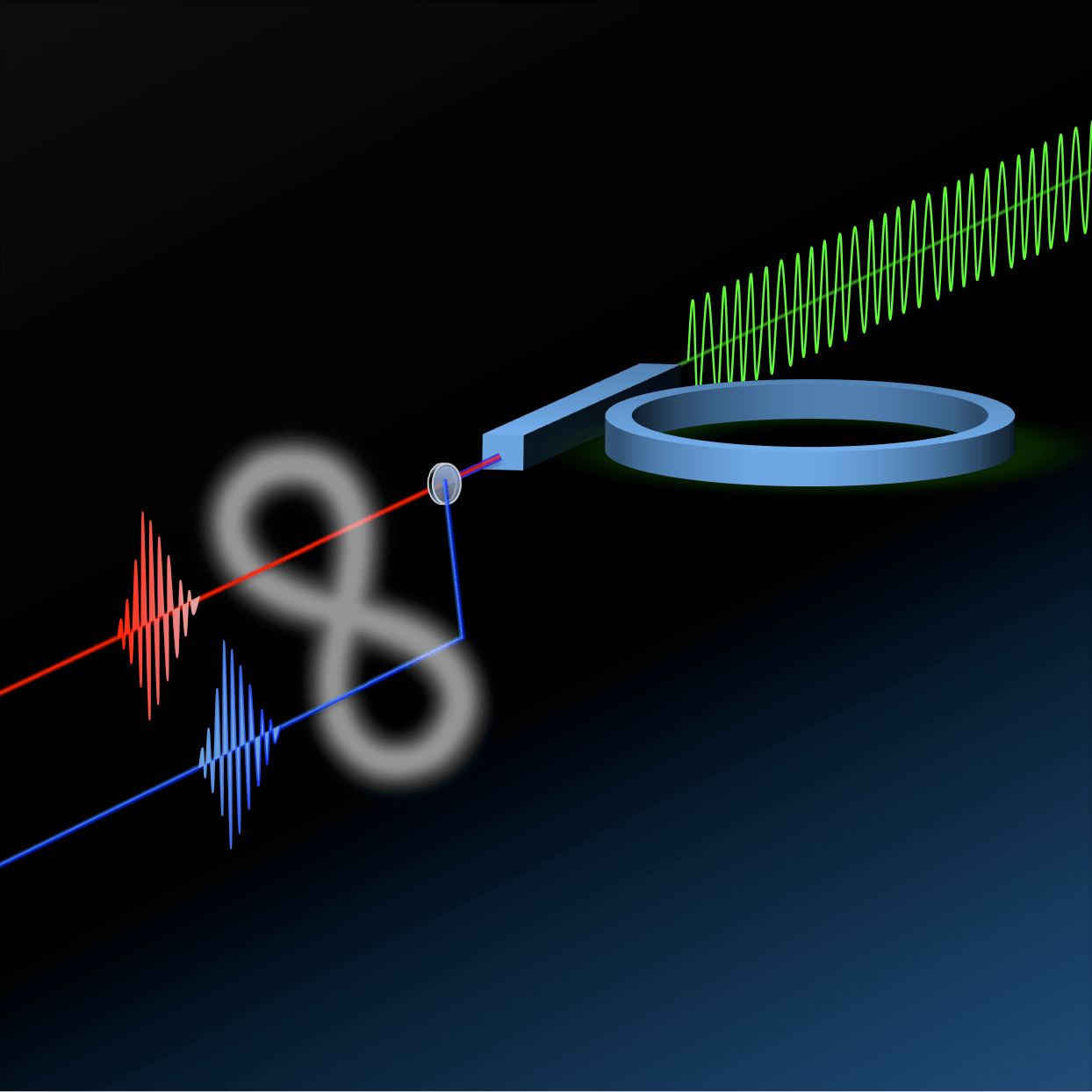- Get link
- X
- Other Apps
- Get link
- X
- Other Apps

Unlike the magic ring of Bilbo, which confuses people's hearts, engineers have created a new micro-ring that tangles individual particles of light. This is the first important step for a whole range of new technologies.
Quantum entanglement - an instant connection between two particles, regardless of their distance from each other - is one of the most interesting, promising and intriguing phenomena in physics. Correctly tuned entangled photons can revolutionize computing, communication technologies and cybersecurity. Although confusion has already been created in the laboratory and even in relatively large optoelectronic components, a practical source of entangled photons that can be housed on an ordinary computer chip remains elusive.
A new study published in the journal Optica describes how a team of scientists for the first time in history created a microscopic component small enough that it could fit on a standard silicon chip that can provide a continuous supply of entangled photons.
The new design is based on the already known silicon technology, known as the micro-ring resonator. These resonators are in reality loops that can entangle and then re-emit light particles. Correcting the design of this resonator, scientists have created a new source of entangled photons, incredibly small and highly efficient, which makes it an ideal component-on-chip.
"The main advantage of our new source is that it is small, bright and based on silicon," says Daniel Bajoni, a scientist from the University of Pavia in Italy, co-author of the work. - The diameter of the ring resonator is 20 microns, one-third the width of a human hair. The previous sources were hundreds of times larger than the one that we developed. "
From entanglement to innovation
Scientists and engineers have long recognized the enormous practical potential of entangled photons. This curious manifestation of quantum physics, which Einstein called "an eerie action at a distance," has two important implications for the world of modern technology.
First, if something affects one of the intricate photons, the other instantly reacts to this action, even if it is on the opposite side of the computer chip or on the opposite end of the galaxy. This behavior can be used to increase the power and speed of calculations. Secondly, if two photons can in some way be considered as a single whole, it allows creating a communication protocol that will not be subject to any hacking.

Green wave is a laser beam; Red and blue are entangled pairs of photons
This seemingly impossible behavior is important for the development of certain next-generation technologies, such as computers, which will be much more powerful than the most advanced and advanced supercomputers of the modern era, as well as secure telecommunications.
Entangled-on-a-chip
However, in order to implement these new technologies, a new class of emitters of entangled photons is needed, which can easily be incorporated into existing silicon chip technologies. Achieving this goal was not easy.
To date, the emitters of entangled photons - made primarily from specially designed crystals - can only be reduced to a few millimeters, which is many orders of magnitude greater than needed for on-chip applications. In addition, such elements require a lot of energy, a very important part in the field of telecommunications and computing.
To solve these problems, scientists have studied the potential of ring resonators as a new source of entangled photons. These well-proven optoelectronic components can be easily etched onto a silicon substrate in the same way as other components of semiconductor chips. To "pump", or energize, the resonator, a laser beam is guided along the optical fiber on the input side of the sample, which then connects to the resonator and starts the photons in the race around the ring. In this loop, photons have an ideal environment for communication and entanglement.
When photons emerge from the resonator, scientists have established that a significant number of them are confusing.
"Our device is capable of emitting light with striking quantum properties, which have never been observed with the example of a built-in source," says Bazhoni. "The speed with which entangled photons are formed is unprecedented for silicon integrated sources and comparable in volume to powerful crystals pumped by very powerful lasers."
Application and future of technology
Scientists believe that their work is of particular importance, since it demonstrates, for the first time in history, the quintessence of the quantum effect - entanglement - in an already proven and well-known technology.
"Over the past few years, silicon integrated devices have been developed for filtering and directing light, mostly for telecommunications applications," says Bazhoni. "Our micro-ring resonator can easily be used together with such devices, which brings us closer to full-on-the-chip confusion."
Thus, this work can contribute to the adoption of quantum information technologies, in particular, protocols of quantum cryptography. According to Bazhoni and his colleagues, these protocols have already been demonstrated and tested. They lack a few details, including a small and reliable source of entangled photons that can spread in fiber-optic networks. The problem, it turns out, is solved.
The article is based on materials .
- Get link
- X
- Other Apps
Comments
Post a Comment